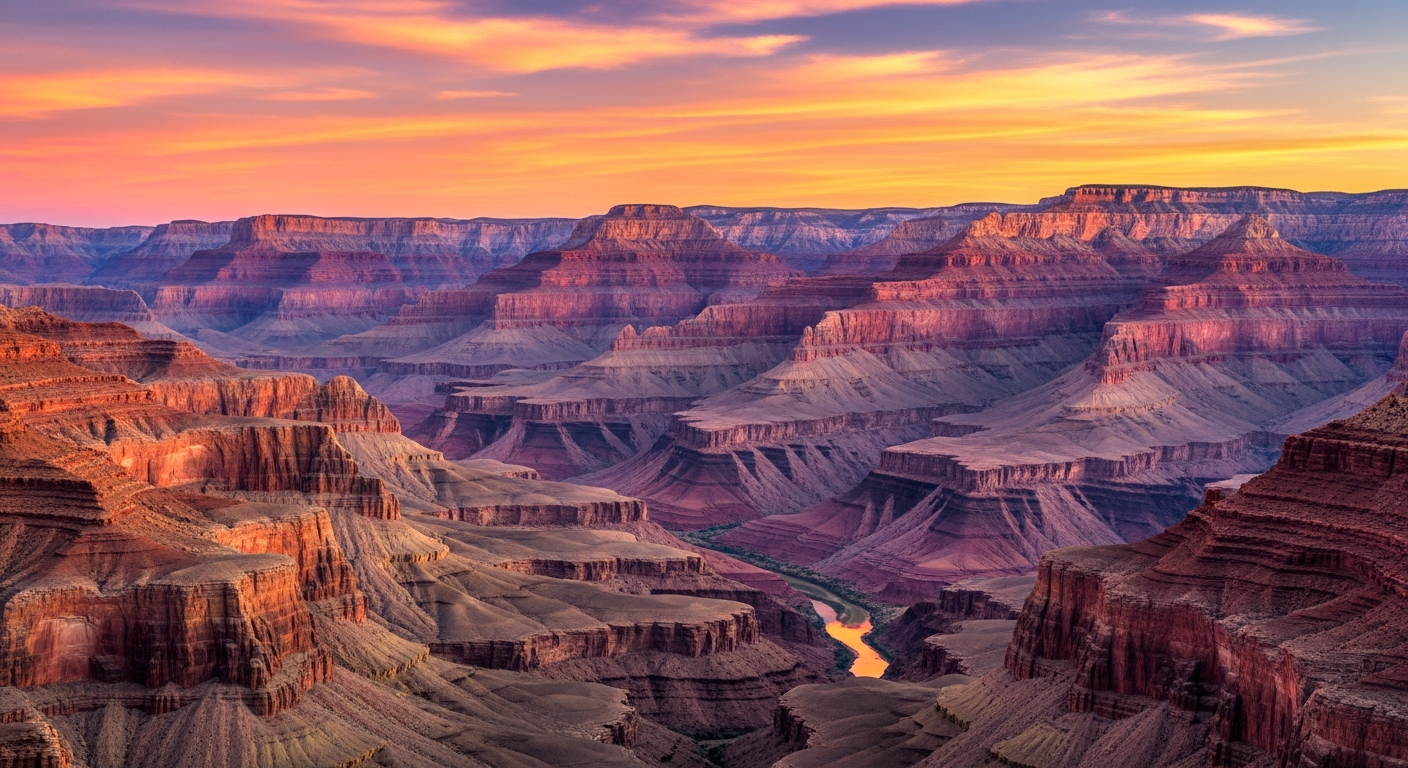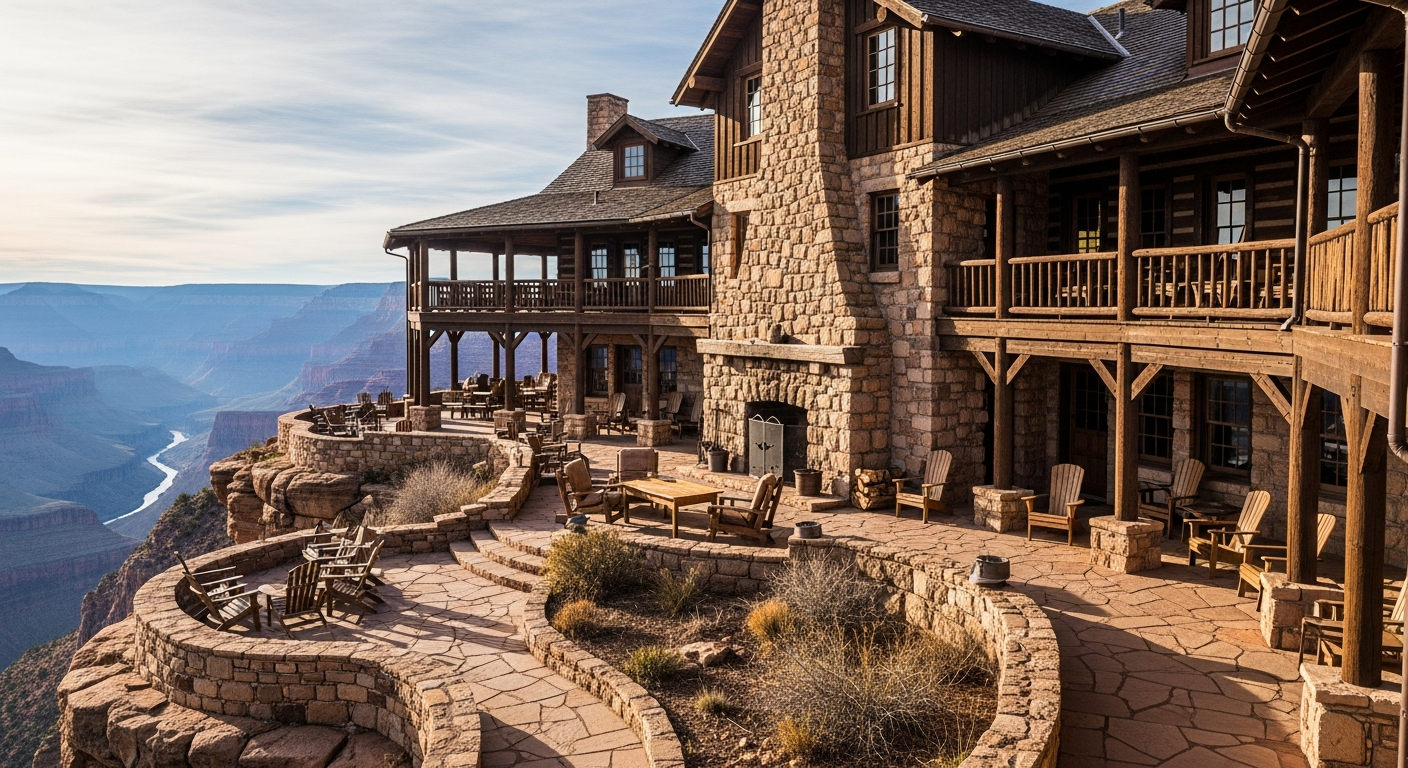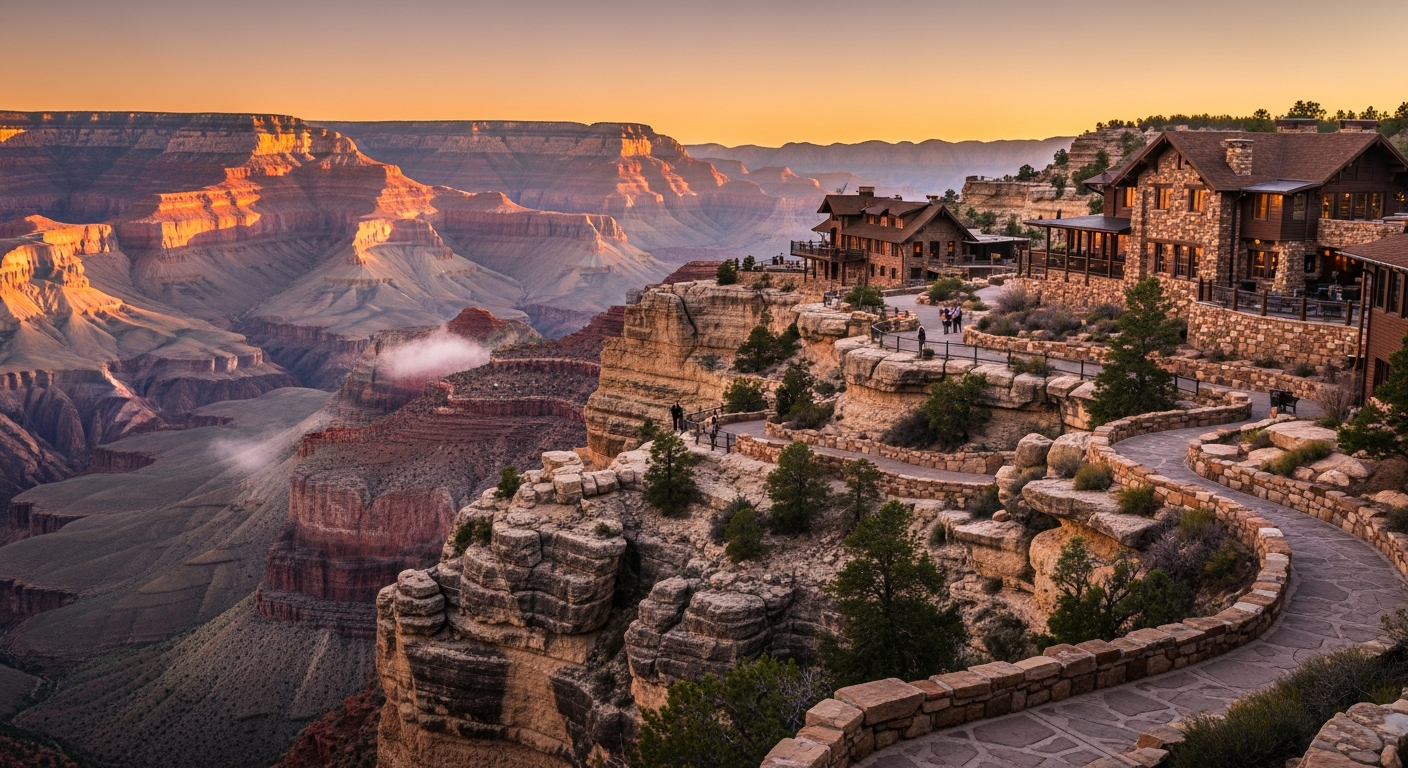The Grand Canyon is a breathtaking natural wonder. Its immense scale and intricate colors captivate millions. While the canyon has several access points, the South Rim stands out as the most visited and accessible area. It offers iconic vistas, numerous amenities, and activities for every type of traveler. This guide provides everything you need to plan an unforgettable trip to the Grand Canyon’s South Rim.

Planning Your Visit: The Best Time to Go
Choosing the right time to visit the Grand Canyon significantly impacts your experience. Each season offers a unique perspective, along with different weather and crowd levels. Therefore, you should consider your priorities when selecting your travel dates.
Spring and Fall (March-May & September-November)
Many travelers consider the shoulder seasons of spring and fall to be ideal. During these months, the weather is pleasant, with daytime temperatures that are perfect for hiking. Furthermore, the crowds are smaller than in the peak summer season. Spring brings blooming wildflowers, while autumn showcases crisp air and beautiful light. However, be prepared for fluctuating temperatures. A warm afternoon can quickly turn into a cold night, so packing layers is essential.
Summer (June-August)
Summer is the most popular time to visit. Consequently, it is also the most crowded and hottest season. Temperatures on the rim are warm and pleasant, but they can soar to extreme levels inside the canyon. If you plan to hike, you must start very early and carry plenty of water. Afternoon thunderstorms are also common. Despite the crowds, summer offers the most services, including a full shuttle bus schedule and all open facilities. The Grand Canyon South Rim receives the majority of its visitors during these months. Source
Winter (December-February)
Winter transforms the Grand Canyon into a serene, magical landscape. A dusting of snow on the red rocks creates a stunning contrast. This season sees the fewest visitors, offering a peaceful and quiet experience. However, be prepared for cold weather and potential road closures due to snow. Some services and viewpoints may have limited access. Nevertheless, for those seeking solitude and unique photo opportunities, winter is an excellent choice.
How to Get to the South Rim
Reaching the Grand Canyon South Rim is straightforward from several major hubs in the Southwest. Most visitors arrive by car, as it provides the most flexibility for exploring the region.
- From Phoenix, AZ (Approx. 4 hours): Drive north on I-17 to Flagstaff, then take I-40 west to Williams. From Williams, head north on AZ-64 directly to the South Rim entrance.
- From Las Vegas, NV (Approx. 4.5 hours): Drive southeast on US-93 to Kingman, then head east on I-40 to Williams. Finally, take AZ-64 north to the park.
- From Flagstaff, AZ (Approx. 1.5 hours): This is the closest major city. You can take US-180 north or AZ-64 north for a scenic drive to the park entrance.
For those who prefer to fly, Flagstaff Pulliam Airport (FLG) is the closest commercial airport. Alternatively, you can fly into Phoenix Sky Harbor International Airport (PHX) or Harry Reid International Airport in Las Vegas (LAS) and rent a car.
Where to Stay: Lodging Options
Securing lodging is one of the most important parts of planning your trip. Options range from historic lodges on the canyon’s edge to more affordable hotels in nearby towns. You should book well in advance, especially for in-park lodging.

Inside the National Park
Staying inside the park offers unparalleled convenience. You can wake up to sunrise views just steps from your room. Several historic lodges, such as the El Tovar Hotel, Bright Angel Lodge, and Maswik Lodge, provide a rustic and memorable experience. These properties are extremely popular. In fact, reservations often fill up a year or more in advance. Therefore, early booking is absolutely critical if you wish to stay within the park boundaries.
Outside the National Park
For more options and often better availability, consider staying in a gateway community.
- Tusayan: Located just outside the south entrance, this small town offers several hotels, restaurants, and an IMAX theater. It is the most convenient option outside the park.
- Williams: About an hour south of the rim, Williams is a charming town on historic Route 66. It is also the departure point for the Grand Canyon Railway.
- Flagstaff: This city is about 90 minutes away but provides a much wider range of lodging, dining, and shopping options.
Top Viewpoints and Activities
The South Rim is packed with stunning viewpoints and exciting activities. From casual strolls along the rim to challenging hikes into the canyon, there is something for everyone.
Must-See Viewpoints
The park’s free shuttle bus system makes it easy to access most major viewpoints. Mather Point is often the first view visitors see, offering a spectacular panorama. Nearby, Yavapai Point provides a wider perspective and is home to the Yavapai Geology Museum. For incredible sunset views, Hopi Point on Hermit Road is a popular choice. Further east, the Desert View Watchtower offers a unique architectural element and commanding views of the canyon and the Colorado River.
Popular Activities
- Hike the Rim Trail: This mostly flat, paved trail stretches for 13 miles along the edge of the canyon. It connects several viewpoints and is perfect for all fitness levels.
- Hike into the Canyon: For a more strenuous adventure, consider hiking a portion of the Bright Angel Trail or South Kaibab Trail. Remember that hiking down is optional, but hiking up is mandatory. These trails are steep and challenging.
- Attend a Ranger Program: The National Park Service offers free ranger-led talks and walks. These programs cover topics like geology, wildlife, and history, providing deeper insight into the canyon.
- Take a Helicopter Tour: For a truly unforgettable perspective, a helicopter tour provides a bird’s-eye view of the canyon’s vastness. Several companies operate tours from the nearby town of Tusayan.
Final Tips for a Great Trip
To make the most of your visit, keep a few practical tips in mind. First, pay the park entrance fee online in advance to save time at the gate. Second, use the free shuttle buses to navigate the park, as parking at popular viewpoints is extremely limited. Finally, and most importantly, stay hydrated. The high altitude and dry climate can quickly lead to dehydration, so carry and drink water constantly, even if you don’t feel thirsty.

